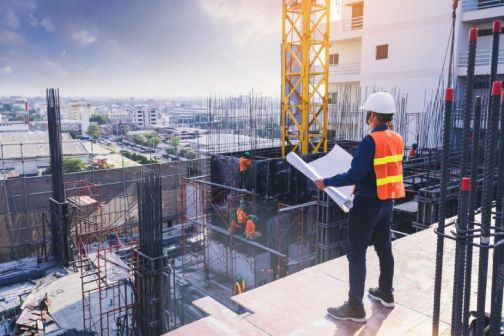What Building Regulations are changing during 2020?

With many of these changes expected to come into force before the end of 2020, building design and HVAC specification will likely look very different for both commercial and residential projects by this time next year.
Government’s preferred timeframe
In total, five Building Regulations relating to Part L and Part F are expected to be updated during 2020. Whether these timeframes are realistic or not, there is likely to be reduced lead-in and consultation time compared to previous updates, in order to fit within Government’s preferred timings:
- Early 2020: All five consultations to be launched
- Early/mid 2020: Final publication of new Part L, Part F and overheating regulations, with supporting guidance
- Mid/late 2020: New Part L, Part F and overheating regulations come into force
Changing regulations
The focus on changing the approach to HVAC specification within new and existing buildings is mainly in response to the UK’s commitment to stricter environmental targets, such as becoming entirely net-zero by 2050.
This coincides with a need to improve efforts to meet the forthcoming carbon budgets and a requirement to align with the Energy Performance of Buildings Directive.
Energy efficiency standards for work carried out in new dwellings
In October 2019 the Future Homes Standard consultation was launched, focussed on changing the way new residential developments need to comply with Part L and Part F. Having closed in early February 2020, this consultation has the potential to alter the way specifiers set HVAC strategies and approach building design through the introduction of four compliance metrics.
With Government currently reviewing the consultation response from industry, the amended Part L and Part F 2020 regulations are likely be published mid-2020, ready to become legally enforceable before the end of the year.

Overheating in new dwellings
Part L 2013 created conditions which increased the likelihood of new developments overheating. This is because as the building envelope has tightened, excess heat from sources such as system losses and solar gains have become trapped within dwellings due to lower levels of air permeability. This has raised temperatures to uncomfortable levels, which Government is now looking to address.
Little is known about the impact this Overheating regulation will have on new residential developments. It could mirror the cooling hierarchy set out within the draft London Plan. This would require the submission of an energy strategy showing how new developments will reduce overheating risk and reliance on air conditioning systems.
Energy efficiency standards for work carried out in existing dwellings
The existing housing stock proposes a significant challenge in the achievement of the 2050 net-zero target. A 2019 report from the Committee on Climate Change (CCC) found that emissions reductions from the UK’s 29m homes have stalled, whilst their energy use has risen. As such, Government needs to address the market to encourage the decarbonisation of heat within existing homes.
Although the Central Government’s balance between carrot and stick has yet to be determined, the Scottish Government recently released a consultation which could hint at a future of owner occupier regulations. The Improving energy efficiency in owner occupied homes consultation looks to mandate home owners to increase their EPCs to minimum C after 2024 when selling or making certain renovations.
Energy efficiency standards for new buildings other than dwellings
The Government has set a precedent by proposing primary energy as a performance metric for new residential developments. With new commercial projects also likely to use both primary energy and carbon emissions as compliance metrics, alongside revisions to minimum standards such as those for building fabric and noise, the 2020 update is expected to result in stricter targets for building designers to meet.
With timeframes to achieve environmental targets growing shorter/tighter, it is expected that Government will require new commercial developments to be built as close to net-zero operation as possible. Although the exact targets and method for this are still unknown, specifiers will likely see compliance benefits gained from employing highly efficient HVAC solutions, especially those designed to make use of heat recovery from ventilation and hot water systems.

Energy efficiency standards for work to existing buildings other than dwellings
Since the 1st April 2018, private rented non-domestic properties have had to comply with the Minimum Energy Efficient Standard. In commercial applications, this means that a landlord cannot grant a new or renewal of tenancy where the property has an EPC rating of F or G. The update to Part L and Part F for existing non-residential buildings is expected to extend this further.
The Government has become increasingly focussed on operational efficiency as they look to keep emissions and energy use down within existing commercial buildings. As such, it is likely that the refurbishment and maintenance of existing HVAC systems will play an increasing role. This will especially be the case should energy monitoring data play a part in building compliance.
Stay up to date
For more information on these changes and how they could impact HVAC specification, visit our contact us page to be put in contact with you regional specialist. Alternatively, follow our LinkedIn page, for professionals in the built environment.








